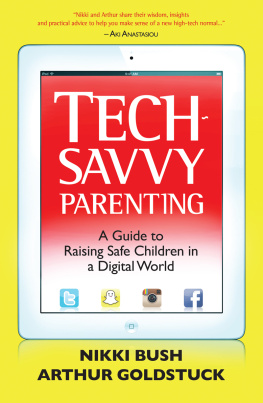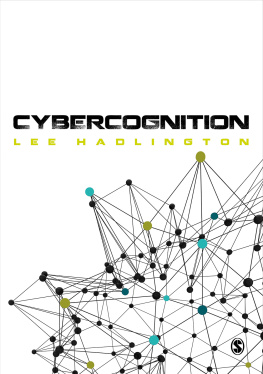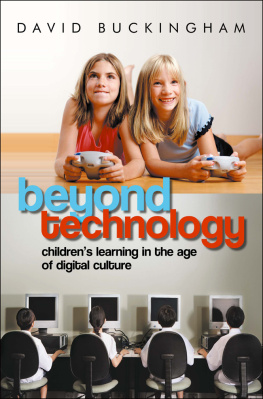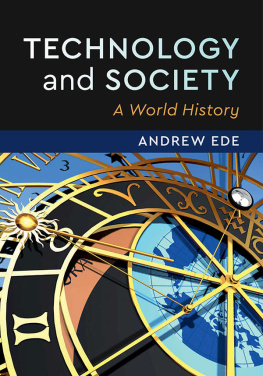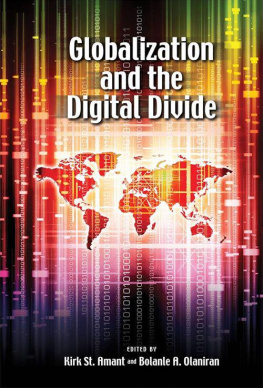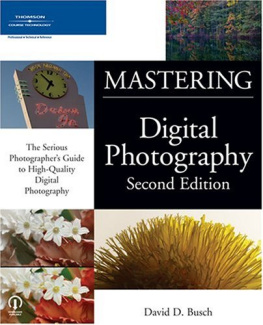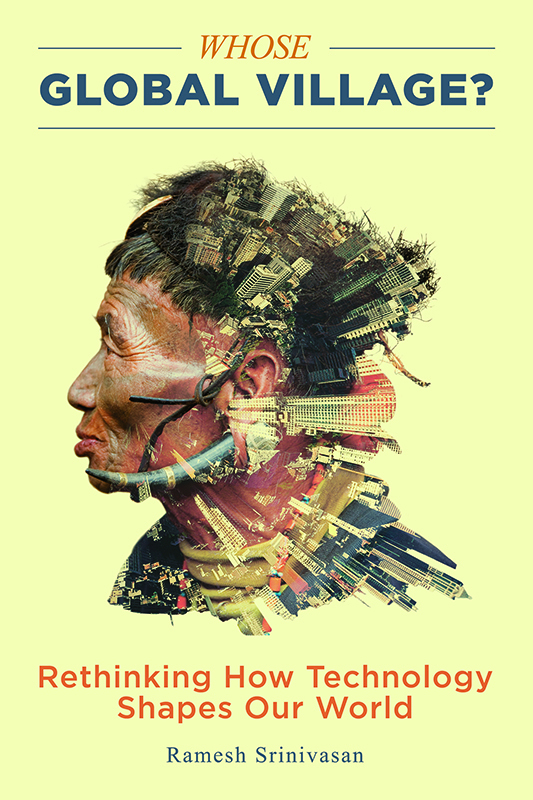
Whose Global Village?
Whose Global Village?
Rethinking How Technology Shapes Our World
Ramesh Srinivasan

NEW YORK UNIVERSITY PRESS
New York
NEW YORK UNIVERSITY PRESS
New York
www.nyupress.org
2017 Ramesh Srinivasan
All rights reserved
References to Internet websites (URLs) were accurate at the time of writing.
Neither the author nor New York University Press is responsible for URLs that
may have expired or changed since the manuscript was prepared.
ISBN : 978-1-4798-6296-2
For Library of Congress Cataloging-in-Publication data, please contact the Library of Congress.
New York University Press books are printed on acid-free paper,
and their binding materials are chosen for strength and durability.
We strive to use environmentally responsible suppliers and materials
to the greatest extent possible in publishing our books.
Manufactured in the United States of America
10 9 8 7 6 5 4 3 2 1
Also available as an ebook
Contents
It was nearly five years ago when I had a vision of sharing the incredible stories, experiences, and lessons I have learned from working with diverse communities and cultures across the world. I imagined that as a first time author the book could best be written in isolation in the redwood forests of Northern California. I was wrong. The book came to write itself while I was active in the world rather than removed from it. It has been written across many countries, and it is through my experiences of fieldwork that it blossomed.
I am truly grateful for those who have hung through it all with me. This book has witnessed my engagement and marriage to the inspiring, beautiful, and powerful Syama Meagher. I thank her for being there for me every day since we met on an amazing Brooklyn night in June 2012.
My parents, Seenu and Sita, and brother, Mahesh, have been there for me since I was so young, along with my grandparents and family in South India. Their compassion and support of my process as I shifted from a young engineer to now humanist, scholar, and activist has been a foundation that has allowed this book to blossom. My father and brothers academic careers complement my own, making for wonderful and hilarious dinner table conversation!
Thank you to NYU Press, and in particular Alicia Nadkarni, who has been a fantastic editor with whom I have greatly enjoyed collaborating. The mentorship of media scholar Henry Jenkins, my professor from many years back, brought NYU Press into my life and early on helped cement the intellectual foundations of this book. Henry has gone above and beyond the responsibility of any mentor to support me, particularly for a student from the past!
I am truly grateful for the support of my colleagues. There are so many of you whom I admire for the brave positions you take, for the intellectual transformations you facilitate, and the presence you have had as true interlocutors. Thanks to my dear friend and colleague Robin Boast, and Adam Fish with whom I will soon be releasing a book titled After the Internet. Thank you also to the many coauthors with whom I have developed fantastic collaborations over the years. UCLA, and the Department of Information Studies, has been an intellectual and professional home for this work to take shape. I thank all my colleagues and students for the valuable conversations we have had, inspiring my work to reach new heights.
Some of you have been involved in giving this book the rich feedback it needed. Shane Boris, especially thank you so muchyour kind and thoughtful comments and edits have given this book a polish, clarity, and quality of argumentation that allows it to straddle the public and academic worlds. Thank you, Kyle Boelte, for your philosophical musings on the meanings of technology. Rukshana Singh, thank you so much for your supportive and constructive comments on this book. Thank you Ruth Livier for your great feedback and excitement! And thank you, Dennis Shepherd, for your incredible cover design and professionalism.
Thank you to my dear friends who have talked with me about this book. You all add so much positive energy into my life.
And thank you with all my heart to all the people and communities with whom I have worked and from whom I had learned so much. You inspire what I write, how I think, and who I am. Finally, thank you to those who read this. I hope this is but the start of a conversation we will have as we think about new technologies and those whose voices they support and serve.
The new technology revolution is neither global nor cross-cultural. It is primarily produced and shaped by powerful corporations and institutions from Europe and North America, with various collaborators across the world. Yet we treat commercial platforms such as Facebook, Twitter, or Google today as if they were public spaces and systems, ignoring that they must remain primarily accountable to their shareholders. These commercial priorities, rather than diverse publics and cultures, shape how these tools are developed and the agendas they serve. It is high time to think about how new technologies can support people across the world. What we have today is a highly asymmetric diffusion of digital tools and systems.
Ninety-nine percent of the worlds population remains excluded from most decisions made around the future of the Internet and digital technology. Billions of people are therefore treated as passive users. Their creativity and agency is restricted to adapting, appropriating, or hacking technologies that already exist. Despite promising movements in free software and open source, even many first-world technology users are expected to comply with platforms that gather and monetize data for their creators. If these users choose not to use these systems, they may face other inequalities because so many political, economic, and social operations have moved online.
This book is concerned with what digital technologies, such as the Internet, mobile phones, or social media platforms may mean when reimagined from the perspective of diverse cultures and communities across the world. No definition of technology should be limited solely to digital media. Communities across the world, past and present, have always developed and crafted innovative tools, systems, and networks that shape social and cultural life.
This book focuses on digital new media technology due to its increased importance in shaping the economic, cultural, social, and political dynamics associated with globalization. On the whole, globalization has reinforced inequality through the way new technologies have been deployed. While new technologies increasingly shape labor, economics, and politics, they are rarely designed to reflect the perspectives of those at the bottom of these food chains.
Digital technologies are not neutral. They are socially constructedcreated by people within organizations, who in turn approach the design process based on a set of values and presumptions. No matter how uncomfortable it may be, we must lose the urge to universalize or naturalize new digital systems such as search algorithms, social media environments, or data storage cloud platforms.
We cannot simply trust our gateways to the digital world as if they were democratically designed platforms, because they are not. Instead, we can imagine alternatives that are noncommercial, public, and conscious of cultural diversity. By uncritically evangelizing language such as cloud, open, or Internet freedom, we block inquiry into what may be. Across the world, we can consider alternatives around how networked technology can better support our families, communities, and cultures. I think here of the inspiring words I recently listened to from Black feminist scholar and activist Angela Davis, who described the violence of the tyranny of the universal. In this lecture that I attended upon Daviss first visit to Chile in over forty years, she explained that many concepts we treat as universal, or perhaps natural or normative, are in fact social and political constructions which block alternative ways of imagining the future. In this spirit, I would like us to avoid thinking of the Internet or new technology as universal and instead imagine alternative democratic futures for technology that serve the agendas of the traditionally marginalized and silenced.
Next page





